Skylab’s 50th Anniversary! What Did We Learn?
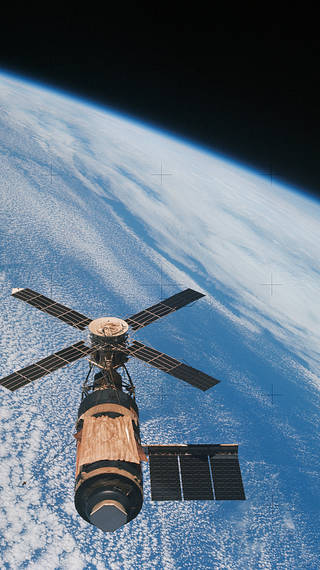
I had the opportunity to listen to a fantastic webinar recently about Skylab. It was hosted by the Intrepid Air and Space Museum, and you can go and watch it yourselves here. It was great. People who participated in building, launching, and working on the United States’ first space station had wonderful, inspiring, and hilarious anecdotes to share! The history of SkyLab’s beginnings is an incredible story of ingenuity, creativity, adaptability, and teamwork. Everyone involved with the space station had one objective – overcome the challenges and make the mission a success. Along the way, NASA, the astronauts, the engineers, and everyone else involved gained invaluable insight and understanding that has served to improve America’s space program to this very day.
Let’s go back…. all the way to 1968. At that time, the project was called the Apollo Applications Program. Its objective was to use equipment and hardware left over from the Apollo Program to create a series of science oriented missions. One of the goals was to study the long-term effects of space on humans. That would best be done in some type of living space – like a space station.
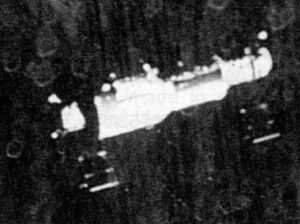
Although the Soviet Union had won that leg of the space race when it launched the Salyut in 1971, the Skylab was much larger and more complex that the Soviet space station. And it was intended to remain in orbit much longer, as well. The Salyut re-entered the atmosphere and burned up over the Pacific Ocean after only 175 days in orbit.
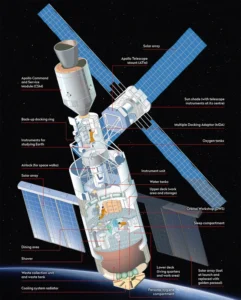
Part of Skylab was built from a repurposed S-IVB stage of a Saturn IB rocket. It had 4 major sections – the Orbital Workshop, which was the main living and working area for crews; the Airlock Module, from which astronauts could exit the station for space walks; the Multiple Docking Adapter, which provided a main and backup docking port for Apollo space craft; and the Apollo Telescope Mount, which contained telescopes and solar arrays. It was by far the largest and heaviest spacecraft at that time.
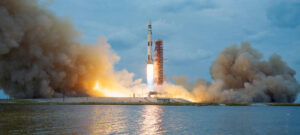
Skylab launched on the last of the Saturn V rockets on May 14, 1973. The crew was scheduled to launch the next day. Everything looked perfect…for about 63 seconds. The micrometeoroid shield, which was supposed to protect the station from debris and heat, had deployed prematurely. One of the solar arrays had also opened too soon. Folks say things happen in 3’s. After the station reached orbit and separated from the Saturn V’s second stage, the solar arrays failed to open properly. The Skylab was not making enough electricity, and was getting very hot – too hot for the crew and equipment.
In those days, there weren’t cameras installed on the rockets. Flight controllers and engineers didn’t know exactly what had happened or the current condition of the space station. They had to depend on sensor readings and a fuzzy picture taken by a ground-based telescope.
They scrambled to get what information they could and brainstorm what they could do to save Skylab and the mission. In the true spirit of teamwork, people from all over the country brainstormed – all ideas were allowed, and when no one could think of anything else, they worked through each suggestion to test the possibilities, following the engineering process.
The crew launch was postponed for 10 days, but when they did launch, they were as prepared as they could be to repair the space station.
This first challenge to the mission led to one innovation that is now a standard part of every spacecraft today. There were a limited number of hand-holds and foot restraint on the Skylab, and none of them were anywhere close to where the astronauts needed to be in order to repair the station. The astronauts had to hold on to one another’s legs as they stretched to reach the debris blocking the arrays from properly opening.
In addition, there was no way for the astronauts to practice and rehearsee the repair procedure. They packed a number of different tools with them in their capsule, and it took several attempts to fix the damage.
An interesting aspect of Skylab was the size of the Orbital Workshop. It was so large that occasionally an astronaut could get ‘stuck’ in the center of the space, unable to reach anything solid with which to pull themselves to the wall. Now, spaces on the ISS are not large enough for someone to get ‘stuck.’ There is always a wall within reach.
Another aspect of life in space was addressed by Skylab experiences. When an astronaut tried to manipulate delicate controls in weightlessness, he needed to be able to hold on to something to stabilize himself, or the process of adjusting controls would push him away from the console and interfere with delicate measurements.
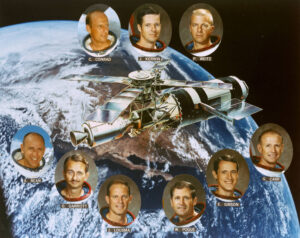
In the end, Skylab was repaired. It went on to fulfill its mission. Three successive 3 man crews lived on the station, performing 270 experiments on solar astronomy, Earth observations, and biomedical and life sciences. Each crew also extended the record for consecutive days spent in space – 28, 56, and 84. They encountered challenges, and found ways to solve problems. Every mission added to our knowledge and understanding.of life and work in space.
The third and final crew to live on Skylab left the station in February 1974. It continued to orbit Earth until its orbital decay prompted NASA to fire its rockets for a re-entry that would avoid densely populated areas.
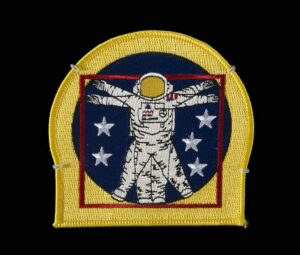 To this day, NASA and American astronauts recognize the importance of the Skylab missions by including a star on their EVA suit patches that represents America’s first space station.
To this day, NASA and American astronauts recognize the importance of the Skylab missions by including a star on their EVA suit patches that represents America’s first space station.
The US Space and Rocket Center will be hosting a documentary and panel discussion celebrating Skylab on August 17. You can find more information here.
Resources
Astro Live – SKYLAB 50th Anniversary, July 16, 2023
Space.com: Skylab: First U.S. Space Station
BBC Sky at Night: The Story of the Skylab Space Station
Historic Spacecraft: Skylab Space Station

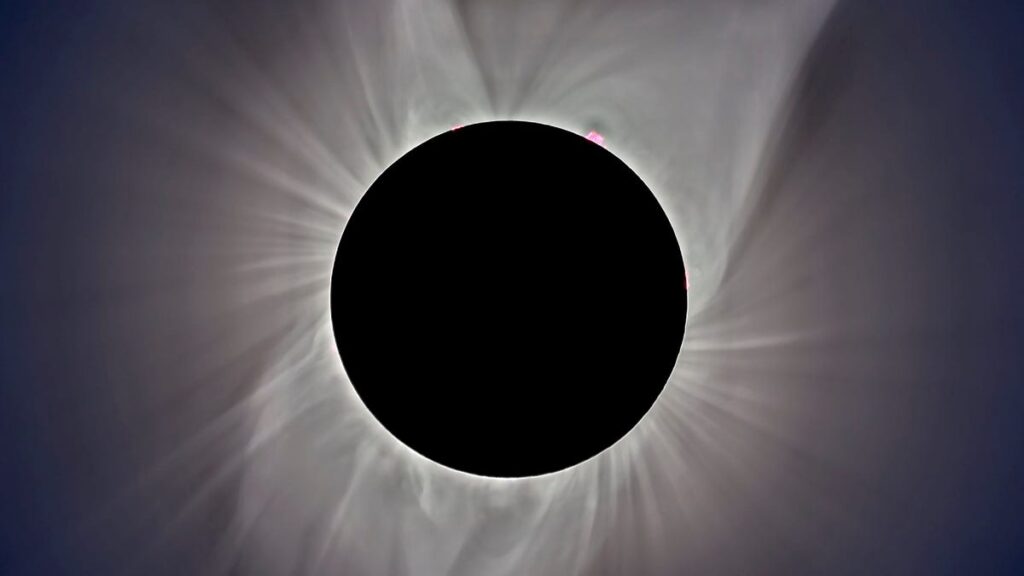



Responses